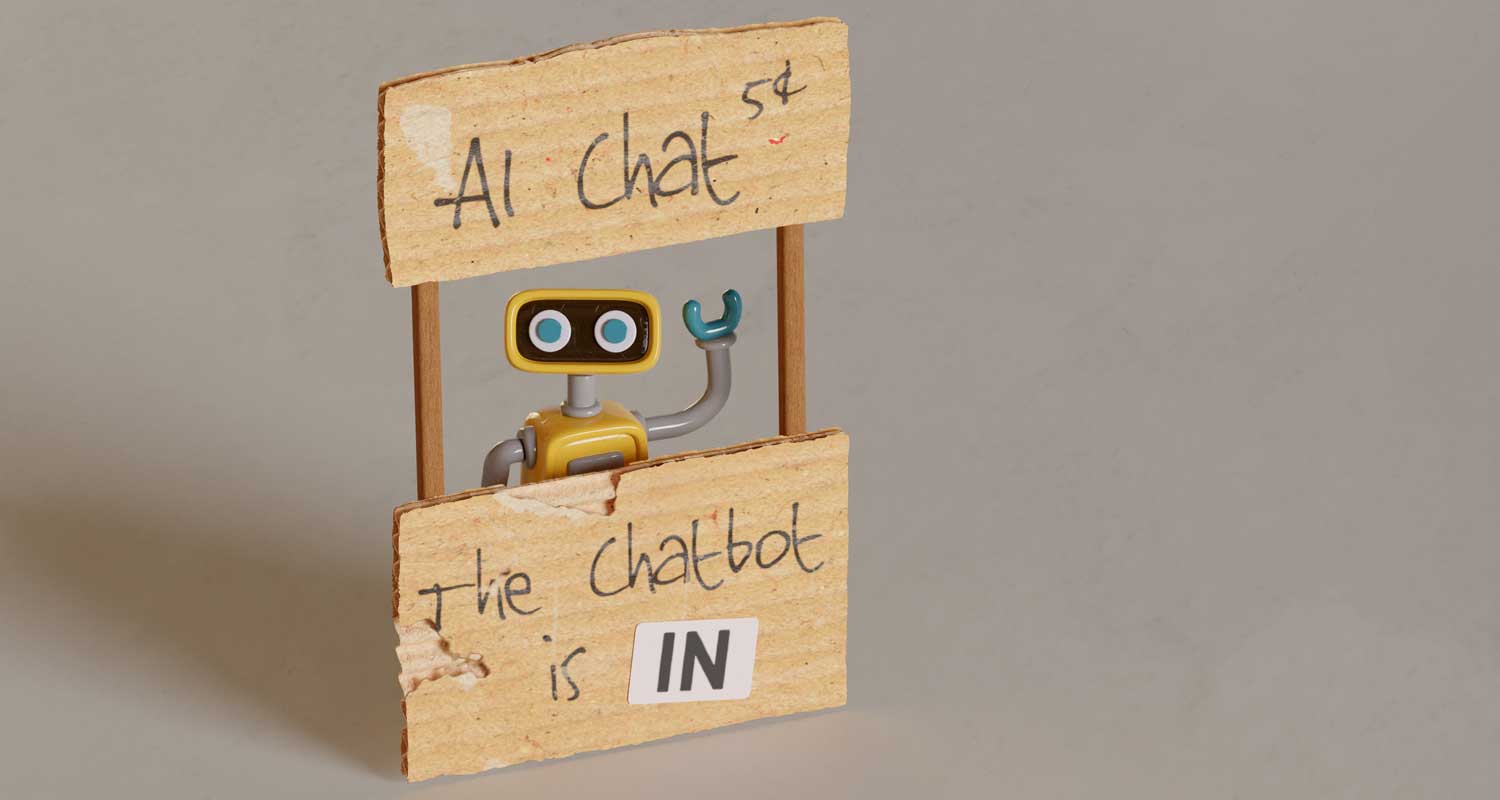
Head of engineering at Bluegrass Digital Simon Buerger hosted a tech talk about artificial intelligence (AI) at the beginning of May, explaining how AI will change work as we know it.
Large language models like the one used in ChatGPT hold incredible promise because they can generate a human-like output from a simple natural language prompt. Trained on massive amounts of data, ChatGPT can produce content that’s coherent, fluent and relevant to whatever your question is.
“It has opened the world’s eyes to just how incredible this technology actually is and how it will transform the way we work,” he said. But obviously there are several risks and challenges that we need to be mindful of, too, as we dip our toes into the world of generative AI. These concerns include fears around data security, fairness and how to balance the role of humans with these autonomous machines.”
Having already played around with various AI tools, Buerger shared some insights based on his experiences, detailing where they can help and what they can and can’t do. Here are a few highlights.
Generative AI has a broader focus
Up until now, most AI applications have had quite a narrow focus – to drive a car or recognise objects in an image or play chess. These models can do all these specific tasks exceptionally well. But with large language models, the “intelligence” is more general, in fact, people even suggest that it is paving the way towards what is known as “artificial general intelligence” or AGI. While it’s not quite there yet, there is potential for these models to eventually be better at most things than most people; they can use data to infer things, solve problems and even complete novel tasks without being explicitly taught how to do so.
Generative AI creates new efficiencies for business
Buerger listed many of the ways that AI can make businesses more efficient – particularly when it comes to handling repetitive work. AI will be better at doing certain tasks than we are, he said. This is the joy of automation. When your software development teams don’t have to worry about software testing, bug detection or data analysis, they have more time to focus on building innovative and effective experiences for the business and for its customers.
For example, when AI is incorporated into the Microsoft 365 suite through the upcoming 365 Copilot program, it will be able to help users revise and rewrite emails, write user stories, recap meetings, summarise documents and draft workplace policies. This makes everyone more productive and enables them to focus on more important tasks.
Generative AI makes more meaningful integrations possible
GPT-4 (ChatGPT+) is actually really good at code problems, especially for the more common languages and frameworks because there is a lot of high-quality content the model can draw from. And with plugins now available, the depth and breadth of use cases has grown. When large language models are paired with plugins, they are able to access and surface much more relevant and up-to-date information.
 Generative AI needs you to ask the right questions
Generative AI needs you to ask the right questions
How you ask a question is extremely important. If you work in this space, you will likely have heard the saying: “garbage in, garbage out” and with large language models this is especially true. Simple changes to a prompt can have a big impact – you can improve the output by asking it to reflect on what it has written, to role play or to think step by step. For example, you could write: “You’re a solutions architect, propose a suitable architecture for the following application. Think step by step.”
Generative AI still has limitations
Given the hype, Buerger expects that clients will be coming to development teams and asking them to incorporate AI into everything. Here it’s important for developers to use their expertise to suggest where it will and won’t be appropriate. Many large language models are only trained using datasets up until the end of 2021. This makes them less useful in instances when you need more up-to-date knowledge. That said, when integrated with search, they suddenly become a lot more useful. That search can be on the public internet – as seen in the new Bing Chat – or private, like on a company wiki.
In Buerger’s experience, they can be unreliable, inaccurate and even “make stuff up” when they don’t have the answers you’re looking for. Another thing to consider is that these models have a very small context window – a couple of thousand words usually – which can be a limitation when working with bigger code bases or datasets. But, obviously, this will all improve over time.
How do you decide where to use these models in your business?
While it depends entirely on your needs and preferences, Buerger advised the following:
- Do use it to generate ideas and gain inspiration that will serve as a starting point to create something yourself.
- Do use it to summarise and draft documents.
- Don’t paste your company’s trade secrets, proprietary information or any personal information into these models.
- Don’t rely solely on one tool as the market is constantly evolving.
- Do take time to learn more about the risks and understand the sometimes negative impact of these innovations – from disinformation and ethics to privacy considerations, job losses and copyright.
- Do keep humans in the loop. Be sure to always review the output before sending it off to a client.
At the end of the day, you must remember that when working on software projects, it’s a bit like building a slightly different car every time, said Buerger. They all have engines and wheels but there will be things about them that are slightly different. “There is a lot of repetition in the work we do and this is where generative AI excels. Generative AI is only going to get better, and it will have an impact on every aspect of our lives, so we all need to learn how to use this technology to supercharge the work we do.”
Want to find out more about how you can use AI to unlock value in your business? Get in touch here.
- The author, Nick Durrant, is co-founder and MD of Bluegrass Digital
- Read more articles by Bluegrass Digital on TechCentral
- This promoted content was paid for by the party concerned




